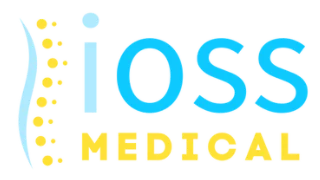Are you suffering from coccydynia or tailbone pain? Look no further! Our state-of-the-art clinic in Clifton, NJ offers specialized coccydynia treatment to help you find lasting relief and regain your comfort.
At our clinic, we understand the debilitating effects of coccydynia, a condition that causes pain and discomfort in the tailbone area. We are here to provide personalized treatment tailored to your specific needs, addressing the underlying causes of your pain. Our team of highly skilled professionals, including orthopedic specialists and physical therapists, is dedicated to helping you overcome the discomfort and inconvenience caused by coccydynia.
Imagine living your life free from the constant pain and discomfort of coccydynia. Our comprehensive treatments are designed to alleviate your symptoms, improve mobility, and enhance your overall quality of life. Through a combination of targeted exercises, manual therapies, and advanced pain management techniques, we aim to provide you with long-term relief and restore your ability to engage in your favorite activities.
Don’t let coccydynia hold you back any longer. Take the first step towards a pain-free future by calling us at (973) 798-1787 to schedule a consultation with one of our experienced specialists. Start your journey towards lasting relief today and discover the difference our specialized coccydynia treatment can make in your life.
Understanding Coccydynia
Coccydynia is a condition characterized by persistent and often severe pain in the region of the tailbone, also known as the coccyx. This pain can be debilitating, affecting daily activities and causing discomfort even during simple tasks. It can be caused by various factors, such as trauma resulting from falls, childbirth, or prolonged sitting on hard surfaces. The discomfort experienced with coccydynia is not limited to the tailbone area; it can radiate throughout the lower back, making even the most basic movements excruciatingly painful. Seeking proper medical attention and exploring treatment options is crucial for individuals dealing with this challenging condition.
Causes
In most cases, coccydynia occurs without an identifiable cause, a condition known as idiopathic coccydynia. However, it can also be linked to:
- Trauma or injury
- Degenerative joint changes
- Childbirth
- Tumors or infection
Understanding the root cause is crucial in devising an effective treatment plan tailored to the individual patient’s needs.
Diagnosis and Assessment
An accurate diagnosis is the first step in effectively managing coccydynia. A detailed history and physical examination will be conducted, often followed by imaging studies such as X-rays or MRI scans.
Common Symptoms
Symptoms may include:
- Localized pain in the tailbone area
- Pain that worsens when sitting or with changes in position
- Pain during bowel movements or sex
- Shooting pain down the legs in severe cases
Once diagnosed, the severity of the condition and its impact on daily life are assessed to create a baseline for treatment.
Conservative Treatment Options
For many patients, the journey to managing coccydynia begins with conservative approaches that aim to reduce pain and improve function without invasive procedures.
Pain Management Techniques
Pain relievers, both over-the-counter and prescription, can provide short-term relief. However, they are often part of a broader pain management strategy and not a standalone solution. Non-steroidal anti-inflammatory drugs (NSAIDs) and acetaminophen are commonly used to manage pain.
Lifestyle Modifications
Simple adjustments to daily habits can make a profound difference. Recommendations might include:
- Using a cushion or doughnut when sitting.
- Getting up and walking around to relieve pressure.
- Avoiding activities that exacerbate pain.
Medical Interventions
When conservative treatments aren’t sufficient, medical interventions offer additional avenues to explore for pain relief.
Medications for Pain Relief
In addition to nonsteroidal anti-inflammatory drugs (NSAIDs) and acetaminophen, muscle relaxants, and even certain types of antidepressants can be prescribed to effectively manage pain. These antidepressants, known as tricyclic antidepressants, selective serotonin reuptake inhibitors (SSRIs), or serotonin-norepinephrine reuptake inhibitors (SNRIs), work by altering the way the brain interprets pain signals, often serving as a complementary treatment option for individuals with chronic pain. By modulating the brain’s perception of pain, these medications can provide relief and improve the overall quality of life for those who experience persistent or recurring pain.
Injections and Nerve Blocks
In certain situations, when individuals experience inflammation in the tailbone area, healthcare providers may choose to administer steroid injections. These injections aim to effectively reduce inflammation and provide relief. Another approach to managing coccyx-related pain is through the use of nerve blocks. These blocks work by interrupting the pain signals that travel from the coccyx to the brain, offering significant but temporary relief to individuals.
Surgical options
Surgery is generally considered a last resort option, reserved for cases where all other treatment methods have been exhausted without success. When it comes to coccydynia, a condition causing pain in the tailbone, one potential surgical intervention is a coccygectomy. This procedure involves the partial or complete removal of the coccyx bone. While it has shown effectiveness in providing relief for certain patients, the decision to pursue surgery should be made after careful consideration and consultation with a skilled surgeon who can provide tailored advice based on individual circumstances.
Self-care and Home Remedies
There are various methods patients can employ at home to complement professional treatments and promote self-healing.
Cushions and Seating Modifications
Investing in a specially designed cushion, such as a donut-shaped one, can significantly reduce tailbone pressure when sitting for extended periods. This type of cushion provides targeted support and helps distribute weight evenly, promoting better posture and relieving discomfort. Additionally, incorporating ergonomic chairs or standing desks into your workspace setup can further enhance comfort and reduce the risk of developing musculoskeletal issues. By prioritizing proper seating and ergonomic solutions, you can create a more supportive and comfortable environment for prolonged periods of sitting.
Ice and Heat Therapy
One effective way to manage inflammation and alleviate pain is by alternately using ice packs and heating pads. Ice packs can help reduce swelling and numb the affected area, while heating pads promote blood flow and provide soothing warmth. By applying these treatments to the specific location of the coccyx and surrounding tissues for short durations, you can experience relief and promote healing.
Relaxation Techniques
Stress and tension can significantly worsen pain, which is why incorporating relaxation techniques into our daily routines is invaluable. By engaging in deep breathing exercises, practicing meditation, and embracing yoga, we can effectively decrease pain sensitivity while promoting overall relaxation and well-being. These practices provide a holistic approach to managing pain and can have a positive impact on both physical and mental health.
Conclusion
In conclusion, it is crucial for individuals experiencing discomfort and pain in the tailbone region to seek treatment for coccydynia. There are various effective treatment options available, such as physical therapy, medication management, and minimally invasive interventions, which can provide relief and enhance the quality of life. Moreover, it is essential to consult with a specialized healthcare provider in Clifton, NJ who possesses a deep understanding of the complexities associated with coccydynia. This ensures personalized care and long-term success. If you are seeking professional assistance in addressing coccydynia symptoms, we invite you to contact us at (973) 798-1787. Our team is ready to schedule an appointment and guide you toward a future free from pain.

